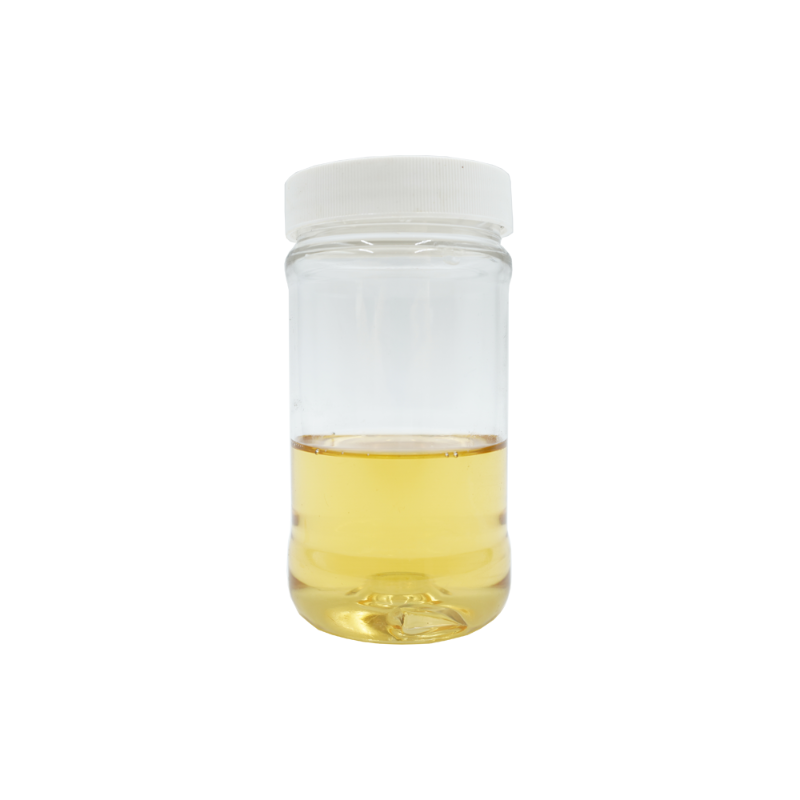-
Categories
-
Pharmaceutical Intermediates
-
Active Pharmaceutical Ingredients
-
Food Additives
- Industrial Coatings
- Agrochemicals
- Dyes and Pigments
- Surfactant
- Flavors and Fragrances
- Chemical Reagents
- Catalyst and Auxiliary
- Natural Products
- Inorganic Chemistry
-
Organic Chemistry
-
Biochemical Engineering
- Analytical Chemistry
- Cosmetic Ingredient
-
Pharmaceutical Intermediates
Promotion
ECHEMI Mall
Wholesale
Weekly Price
Exhibition
News
-
Trade Service
Epoxy powder coatings are the earliest thermosetting powder coatings developed
Phenolic curing agents are widely used in the field of heavy-duty powder coatings due to their superior compatibility, corrosion resistance, flexibility and other comprehensive properties, such as pipelines, valves, steel powder coatings and other fields
1.
The epoxy used in heavy-duty epoxy powder generally refers to bisphenol A type and its modified bisphenol A type solid epoxy resin.
Direct method and indirect method, direct method can be divided into water washing method, solvent extraction method and solvent method
The direct method (called Taffy method abroad) is a process of polycondensation of bisphenol A and epichlorohydrin under the action of NaOH to produce solid epoxy resin with medium molecular weight
Domestically produced E-20, E-14, E-12 and other epoxy resins basically use this method, and we will not introduce them in detail here
The indirect method (called Fusion Process abroad) is the addition reaction of low molecular weight liquid E-type epoxy resin and bisphenol A at high temperature or under the action of a catalyst to continuously extend the chain, and finally form a solid epoxy resin with high molecular weight.
For example, GESR-904H, DER-663U, HY03H, HY05, etc.
Among them, the bulk polymerization method is to dissolve the liquid bisphenol A epoxy resin and bisphenol A in a reactor, and then react at a high temperature of 200°C for 2 hours to obtain the product
.
This method is to react at high temperature, so there are many by-products, and the product has a branched structure.
Not only is the epoxy value low, but also the solubility is very poor-even the reaction will freeze
.
Catalytic polymerization method is to heat liquid bisphenol A epoxy resin and bisphenol A in a reactor to 80-120℃ to dissolve it, then add a catalyst to make it react, let it exothermic heat naturally, and cool after exotherm.
React at 150-170°C for 1.
5 hr, and then filter to obtain the finished product
.
In direct synthesis, the reaction is carried out in the form of an emulsion in water
.
When preparing high molecular weight resins, post-processing is more difficult
.
The prepared resin has a wide distribution of relative molecular mass and a high content of organic chlorine.
It is not easy to obtain products with high epoxy value and high softening point to meet the requirements of powder coatings
.
In the indirect synthesis, the reaction proceeds in a homogeneous phase, the chain growth reaction is relatively stable, and the relative molecular mass distribution of the prepared resin is narrow, the content of organic chlorine is low, and the epoxy value and softening point can be controlled by the ratio and reaction temperature.
Adjustment
.
It has the advantages of simple process, convenient operation, less equipment, short working hours, no three wastes, only one reaction, and easy control and adjustment of product quality.
Therefore, it has attracted more and more attention
.
Usage in epoxy powder coatings: In terms of product quality, the solvent method is better than the melting method, and the indirect method is better than the direct method, but the manufacturing cost is correspondingly higher
.
At present, most epoxy resins for powder coatings are produced by the direct method in the melting method, which can meet the requirements of product quality
.
In anticorrosive epoxy powder coatings, due to the extremely high requirements for coating performance (especially electrochemical and anticorrosive performance), the epoxy resin selected is mainly indirect
.
Table 1 The difference in product performance between direct method and indirect method
2.
Curing agent for epoxy powder coating
Epoxy resin itself is a kind of thermoplastic material.
It needs to undergo a curing reaction with a curing agent under certain conditions to produce a product with a three-dimensional network structure.
Only then will it exhibit various excellent properties and truly become a valuable epoxy material.
The curing agent is indispensable in the application of epoxy resin, and even plays a decisive role
.
In order to meet the special production and coating process needs of powder coatings, the curing agent matched with epoxy resin must have the following characteristics:
(1) Good miscibility with film-forming substances (including resins, additives, pigments, fillers, etc.
);
(2) It does not react with the resin at room temperature, but can quickly cross-link with the resin when heated to the curing temperature, which is a latent curing agent;
(3) There will be no chemical reaction during the powder coating manufacturing process;
(4) During the coating baking process, cooperate with other coating components to give the system better melt fluidity and wettability, so as to make a smooth and smooth coating film;
(5) Solid state, easy to crush, easy to disperse, non-toxic, odorless, no harmful gas emitted;
There are many curing agents used with epoxy resins, but there are few curing agents used in epoxy powder coatings.
They are all latent curing agents and can be simply divided into the following categories: amines, carboxylates Acids, acid anhydrides, phenols and imidazoles, etc.
The following briefly introduces phenolic curing agents for heavy-duty powder coatings
.
Because phenolic resins have some shortcomings when used as curing agents, there has been a trend of replacing phenolic resins with phenolic curing agents.
However, to further improve the heat resistance and corrosion resistance of the coating film, it is still necessary to use phenolic resins.
The epoxy resin is mixed
.
Phenolic curing agent is a special long carbon chain resin polymer, the reactive group is a phenol group, and it has good compatibility with epoxy resin.
Its structural formula is close to that of bisphenol A epoxy resin, and its softening point is 80-130°C
.
The disadvantage is that the reaction activity is low, especially after the viscosity of the system increases in the late stage of the reaction, it is difficult to participate in the reaction due to the curling package of the active reaction end groups
.
In order to improve the reactivity of the macromolecular curing agent and meet the needs of fast curing, some small molecular hydroxyl compounds and catalysts are often added to the curing agent structure design to increase the reaction speed
.
Different curing agent manufacturers keep confidential in terms of the selection of hydroxyl compounds, molecular weight, and the type and amount of catalysts
.
The curing effect brought about by the different curing agent parameters is also different
.
At present, the most commonly used and most economical accelerator is 2-methylimidazole.
Some new accelerators have the functions of anti-yellowing and improving storage stability
.
Such cure systems for film adhesion, flexibility, impact resistance, brightness, leveling and corrosion resistance are very good, non-toxic, the coating system may be used in direct contact with food, drinking water and the like
.
The curing mechanism of phenolic curing agents for epoxy resins is more complicated.
It mainly includes: etherification reaction of phenolic hydroxyl and epoxy, etherification of secondary hydroxyl and epoxy, self-polymerization of epoxy catalyzed by tertiary amine and 2-methyl imidazole ring-opening reaction of the epoxy and the like
.
It shows that no small molecules are generated during the curing process, and there will be no defects such as pinholes in the coating film
.
The presence of a large number of hydroxyl groups promotes adhesion to the substrate
.
Moreover, it has a similar chemical structure to epoxy resin, has good compatibility, and will not cause structural damage due to curing shrinkage.
Together with epoxy resin, it gives the coating film better density and heat resistance.
, Solvent resistance and corrosion resistance
.
At the same time, the curing agent itself is in a resin state, thus ensuring the flexibility of the coating film
.
All this shows that the phenolic curing agent overcomes its relative shortcomings while maintaining the basic physical and chemical properties of the phenolic resin curing agent
.
Especially valuable is that it has fast curing characteristics (180℃*10min or 210℃*3min), making it a leading position among anticorrosive powder coating curing agents for oil and gas pipelines, steel bars, coils and other metals
.
At present, there are many phenolic curing agents on the market, and the performance parameters are far apart.
The hydroxyl equivalent ranges from 230-650, the softening point is between 75-120℃, and the average molecular weight is also different, and some contain some other additives.
, And some do not add other additives
.
、
。/,1:0.
8-0.
6;
,5-10%,,0.
2-0.
5%2-
。
2
2-,、、、
。
0.
1-0.
6%,0.
6-1.
0%,,,
。,
。
3、
1)(FBE),,,,
。
(Tg)<110℃,100℃,80℃,110℃
。
,,
。
80-150℃,,,,
。
In particular, the Tg2 of epoxy powder is generally required to be above 150°C.
Therefore, the development of new high-Tg, high-flexibility fusion-bonded epoxy powder anticorrosive coatings has become a current research hotspot
.
2) Affected by the increase in crude oil prices, the rising energy cost during the baking process of powder coatings and people's emphasis on energy, how to save energy and reduce the baking temperature of powder coatings has increasingly become an important development in the epoxy powder system One of the directions
.






